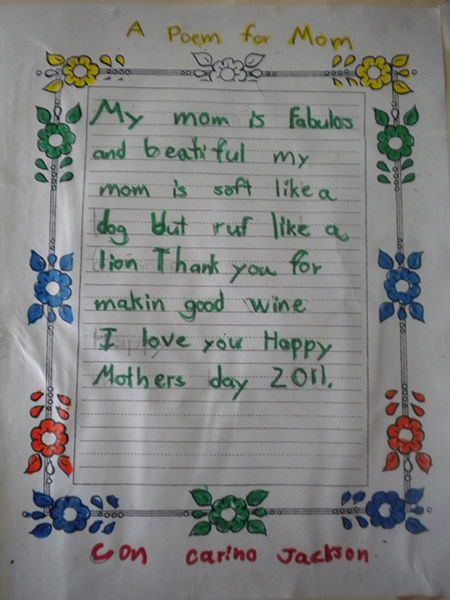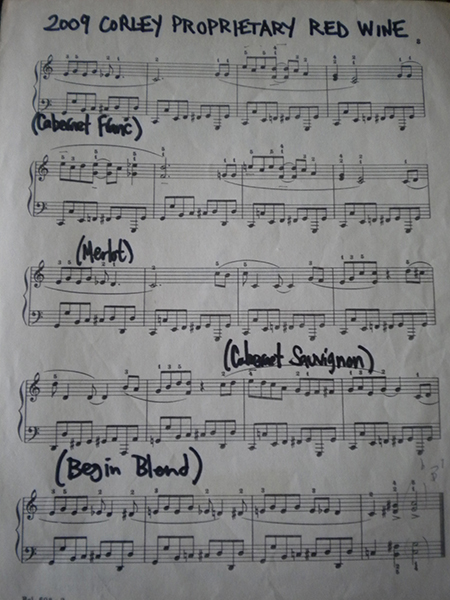My Piano is a Babel Fish
Posted By : Chris Corley
We spend a lot of time talking about wine in our family. We talk about how certain wines taste, how they tasted in the past, how they’ll taste in the future, what foods they taste best with. Wine runs through our blood to the point that my son, Jackson, wrote the following Mothers Day note to my wife, Julianna, in his first grade class – “Happy Mothers Day. My mom is soft like a dog and ruff like a lion. Thank you for makin good wine …”. I wonder what his first grade teacher thought of his poem when he turned that in.

In talking about wine, we use a pretty diverse vocabulary. We speak of wines in every metaphorical means imaginable. We refer to wines in terms of colors – ‘black, blue, purple, red, golden’. We speak of wines in terms of textures – ‘smooth, rough, rich, grippy’. We converse about wines in terms of weight – ‘fat, thin, heavy, light’. We debate wines in terms of numbers – ’96, 91, 89, 92′. We revel in wines in terms of sensuality – ‘elegant, sexy, voluptuous, alluring’.
In every instance we use language to convey the message. We discuss, with words, the emotions or feelings that the wine has invigorated within us. Most of us in the professional wine tasting world understand each other when we’re in the midst of a winespeak tasting session. I imagine that it might sound like a load of gibberish to someone who is not immersed in this metaphorical world of winejaw.
When I’m presenting wines to visitors at Monticello, one of the first things I try to glean is their understanding of wine and more directly, at what level do they engage in winespeak. We don’t have a babel fish to put in our customers ears to translate my enological ramblings, so it’s important to communicate in language that everyone feels comfortable with. Note : A babel fish is a small fish that when placed in the ear will translate any language in the galaxy for the listener (from ‘The Hitchhikers Guide to the Galaxy).
Today we are hosting our Spring Release party, and will be releasing our 2008 Corley Proprietary Red Wine. The festivities will include a wine component / blending presentation that will be largely conveyed via my piano (my babel fish). I’ve deconstructed a song I wrote on the piano and matched the three main preliminary components of our 2009 Proprietary Red Wine to three main components of the song – the bass line, the melody, and the chorus. We’ll taste each of the wines while listening to the musical component. We’ll taste the blend while listening to the song as a whole. The goal is to convey one art form by using another, to minimize the words and revel in the emotion of the blend. Most everyone can feel music. You don’t need to have perfect pitch or be able to snap your fingers to a complex 7/8 rhythm. Most of us can tell when a note is out of tune, or a basic rhythm skipped. Music is a wonderful means of communication. Its inside of all of us.

A Babel Fish Composition
Today, I want to share that visceral pleasure that I enjoy when blending our Monticello wines. At the blending table, I like to close my eyes and savor the wine, to instinctively feel and experience its pleasures or faults. I like to clear my mind of titratable acidities and tannins, and focus on the ethereal and sublime that can be found in the glass. The intellectual aspect of winemaking is done before and after the blending table. The blending table is where art is created, where the paint wets the canvas, the pen hits the paper, and the fingers strike the keys. I’d like our wine club members to experience this today. And I’d like to share it today through music